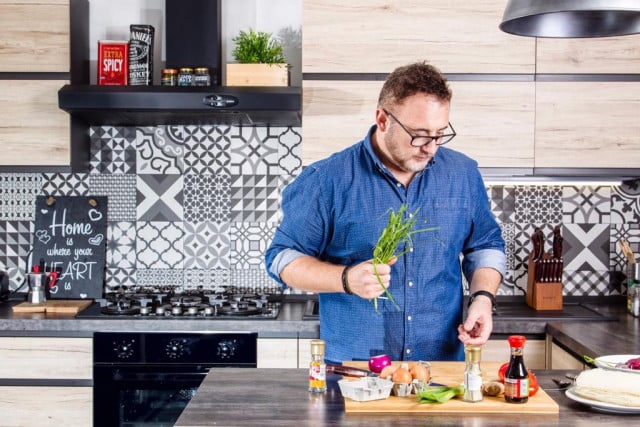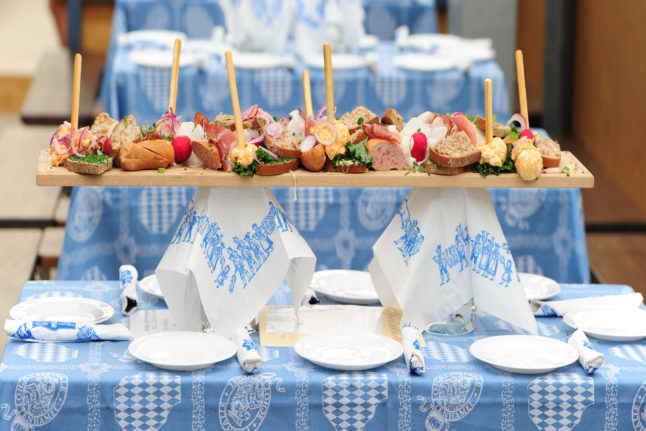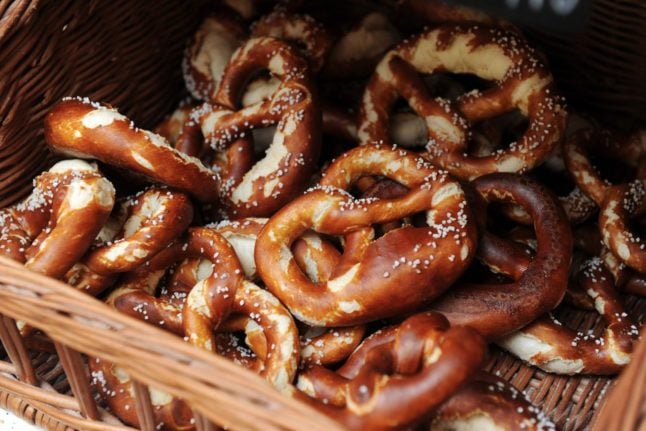When Australian-born Valter applied to be a contestant on a new Italian TV cooking series, he thought he wouldn't even get past the first round.
But he's now in the final nine, whittled down from 3,000 entries from across Italy and beyond, on Rai 2's Il Ristorante degli Chef. On the show, aspiring chefs are judged by experts on their ability to run a kitchen, as well as on their cooking skills.
He says he got his chance to shine on Tuesday's episode when he was given rice to work with. “I was really excited,” he says. “A chicken biryani. I know how to cook it well.”
“I was hoping to bring out my multicultural side. This was my chance to show the judges how well I can use spices,” he says.
His other dishes included prawn dumplings, roasted pork cheeks, and “the star, my Vietnamese salad.”
“They were full of that spice and everything nice about food in Sydney. It’s diverse and full of flavour,” he says.
“Coming from a multicultural society like Australia I’ve experienced a lot of difference types of cuisine and Asian food is my all-time favourite.”
But 46-year-old Valter, who speaks Italian and was born to Italian parents, admits that his biggest strength lies in Italian food, which he learned to cook at a young age.
“I learnt how to make my first ragu at 10,” he says. “My parents both worked long hours. This meant that mum was time poor, So that dinner was ready on time she would get the ingredients ready and have them waiting for me when I got back from school. Then she’d call me and give me instructions on how to make things.”
“Even on my school holidays I would go through mum's recipe books and experiment,” he says. “I just loved cooking. It was a creative outlet and still is today.”
One of the highlights of the competition so far, he says, was when the judges appreciated his twist on the classic carbonara.
“I had to revisit the recipe so I made it with chorizo, cocoa and smoked paprika.”

Photo: Valter di Cecco
On this weeks' show, he was chosen as the first capo brigada or team leader, in charge of service for diners including local celebrities and food bloggers.
Valter, a graphic designer, says he's used to having his work criticised – but being judged is never easy.
“I was trying to stay cool, calm and collected but once the orders starting flowing in things started to get stressful,” he says. “Chef Berton [one of the judges] screaming in your face is challenging but I still remained composed. Deep down I was completely freaking out.”
“But being selected as the first team leader was such an achievement. Who would have thought?”
He will have been living in Italy for three years in December, after he came over for to celebrate New Year in 2015 and “just didn’t go back home.”
“I didn't decide to move to Italy. It just happened,” he explains. “I kept on prolonging my departure date. Then I found a job and decided to stay.”
Though coming to Italy always “felt like being home” he says getting used to life in Rome after living in modern, multicultural Sydney has been a challenge.
“I try to take the good with the bad. I know that my lifestyle here suits me much more than the one I had in Sydney,” he says, though he’s still very attached to Australia and does get the occasional urge to “pack up and leave”
“I miss the clean streets, the beaches. I miss how easy it is to get around and how much space we have in Australia. But most of all i miss my family and friends,” he says.

Photo: Valter di Cecco
“Everything about what I just said means I should go back home,” he says, but admits he has been seduced by the Italian capital.
“I compare Rome to a relationship. It’s that girlfriend or boyfriend that you know deep down inside isn't right for you, but you stay together because of the passion, the excitement.”
“I think I'm in love with Rome,” he jokes.
And the relationship is nowhere near over yet. After the cooking competition, Valter dreams of eventually opening up his own cooking school in Rome, or even opening a restaurant “with an Australian twist.”
“My dream is to become a food ambassador connecting Italy with Australia,” he says.
“I want people in Rome to see that we can change things up a bit in the food industry and show them that we too can cook in other countries.”
But he has a long road ahead of him, as he prepares for the next round of cooking challenges on Il Ristorante degli Chef in which two more contestants face elimination next week.
The pressure is mounting on Valter and the eight other remaining wannabe chefs, but so far his skill and enthusiasm seems to be winning the judges over.
“I hope I can win the competition but I'll take each day as it comes,” he says. “I can't wait for the next challenge. I'm pumped and ready to go.”
You can see Valter and his fellow contestants in action on Tuesdays at 9.20pm on Rai 2.





 Please whitelist us to continue reading.
Please whitelist us to continue reading.